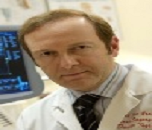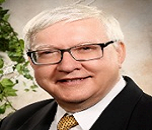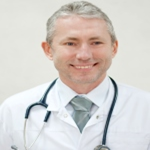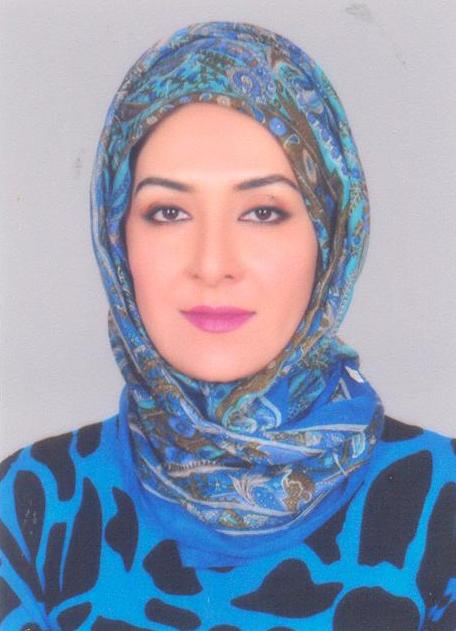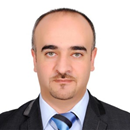Sessions & Tracks
Track 1: Surgery and its Specialties
Surgery is surgical specialty which focuses on abdominal contents in the body. General surgeons not only perform surgeries for a wide range of common ailments, but are also capable and responsible for patient care before, during, and after surgery. The surgeons organize diagnosis and provide the preoperative and post-operative care to patients and are often responsible for the comprehensive management of the trauma victim and the critically ill patient.
Track 2: Ocular Surgery
Ophthalmology is a part of medicine and medical procedure which manages the analysis and treatment of eye issue. Ocular surgery is medical procedure performed on the eye or its adnexa, regularly by an ophthalmologist. The eye is a very fragile organ, and requires extraordinary consideration before, during, and after a surgical procedure to minimize further damage. An eye specialist is responsible for selecting the proper surgery for the patient, and for taking the necessary safety measures. Today it keeps on being a broadly polished sort of medical procedure, having created different methods for treating eye issues. Ophthalmologists are permitted to utilize prescriptions to treat eye illnesses, execute laser treatment, and perform medical procedure when required.
Track 3: Otorhinolaryngology Surgery
Otorhinolaryngology also known as otolaryngology could be a careful subspecialty inside medication that manages states of the ear, nose, and throat (ENT) and related structures of the head and neck. They are normally named as ENT physicians. Doctors who focus on this area are known as otolaryngologists, ENT doctors, ENT surgeons, or head and neck surgeons. Patients ask for treatment from associate specialist for diseases of the ear, nose, throat, base of the bone, and for the surgical management of cancers and benign tumors of the top and neck.
Track 4: Aesthetic medicine and plastic surgery
The exciting field of Aesthetic Medicine is another trend in modern medicine. Aesthetic medicine is an expansive term for specialties that emphasis on improving cosmetic appearance through the treatment of conditions including skin laxity, liver spots, wrinkles, excessive fat, scars, and skin discoloration. Aesthetic medicine incorporates surgical and non- surgical and experts may use a blend of both. Aesthetic medicine contains every medical procedure that is planned for improving the physical appearance and fulfillment of the patient, utilizing non-invasive to insignificantly invasive cosmetic procedures. Some Aesthetic Medicine procedures are performed under local anesthesia while a few methods don't require anesthetics by any stretch of the imagination. Plastic surgery is a reconstructing or repairing parts of the body by the transfer of tissue, either in the treatment of injury or for cosmetic reasons. It can be differentiated into two main divisions: reconstructive and cosmetic surgery. Reconstructive surgery includes craniofacial surgery, hand surgery, microsurgery, and the treatment of burns. While reconstructive surgery intends to reproduce a part of the body or improve its functioning, cosmetic surgery aims at improving the appearance of it. Both of these techniques are utilized throughout the world.
Track 5: Endocrine Surgery
Endocrine surgery could be a sub-specialty that specializes in diseases of the thyroid, endocrine, and adrenal glands. Endocrinologists generally work closely along to produce the foremost advantageous care to patients afflicted with endocrine disorders. To be recognized as endocrine surgeon you have got to devote a significant portion of your surgical apply to endocrine disorders and have performed major endocrine operations. Though there has traditionally been a divide between medical and surgical approaches to disease management, the comparatively new specialty of endocrine surgery merges technical experience with operating knowledge of the physiological changes related to endocrine excess and deficiency.
Track 6: Cardiothoracic Surgery
Cardiothoracic surgery treats conditions within the heart, lungs, and chest. Our surgeons perform a spread of cardiothoracic surgeries, from minimally invasive to heart transplants. Modern surgery has developed to certain range that the body of data and technical skills needed have led to surgeons specializing particularly areas, sometimes anatomical space of the body or sometimes during a specific technique or type of patient. The term cardiothoracic means that "pertaining to the heart and chest." The term comes from the Greek word "kardiakos" which suggests concerning the heart and "thorac" that is Latin for chest. Generally terms, the term refers to the chest. While the term refers to the chest as an entire, in medicine it's most frequently utilized in the context of surgery.
Track 7: Transplantation Surgery
Transplantation surgery is a surgical system in a human in which a body tissue or organ is exchanged from a giver to a beneficiary or starting with one part in the body then onto the next. Organs that can be transplanted are the kidneys, liver, heart, lungs, pancreas, digestive tract, and thymus. Sorts of transplantation surgery include Xenograft and xenotransplantation. Organ givers might live, mind dead, through circulatory demise. Tissue might be recuperated from givers who pass on of circulatory demise, and of mind passing up to 24 hours past the end of the pulse. Not at all like organs, most tissues can be protected and saved up to five years, which means they can be "banked". A transplant surgeon who performs organ transplants among the various organs like kidney, livers, hearts, lungs, the duct gland, the intestine, and recently, faces and penises. At the current time, some organs, notably the brain and its constituent lobes and subdivisions, cannot be transplanted, and make it possible, would be very controversial.
Track 8: Urology Surgery
Urology surgery is additionally referred to as sex organ surgery; it's the division of medicine that emphases on surgical and diseases of the male and urinary tract organs and therefore the male system. The organs beneath the division of urology are kidneys, adrenal glands, ureters, bladder, urethra, and therefore the male procreative organs. Endourology is process using little cameras and machines inserted into the tract. Transurethral operation has been the keystone of Endourology. Surgical process is an especially specific arena of medicine that reinstates each construction and performance. Feminine Urology could be a division of medicine addressing active bladder, pelvic organ prolapses. Urology is one in all the foremost competitive and extremely sought-after surgical specialties for physicians, with new urologists comprising 1.5% of U.S medical-school graduates every year.
Track 9: Neurosurgery
Neurosurgery is that the medicine involved with the interference, diagnosis, surgical operation, and rehabilitation of disorders that have an effect on any portion of nervous system together with the brain, peripheral nerves, and extra-cranial cerebrovascular system. Neurasthenia could be a major division established in endovascular surgery. Divisions of neurosurgery are vascular surgery and Endovascular surgery. Neurosurgeons are responsible to treat the underlying reason for back pain as hostile conservative treatments. Procedures to treat back pain below the realm of surgical operation include discectomy, laminectomy and spinal fusion surgery. In this, there's a better risk of more nerve injury and infection which can lead to dysfunction in the entire body.
Track 10: Orthopedic Surgery
Orthopedic surgery is that the study of surgery involved with things involving the musculoskeletal system. To treat musculoskeletal trauma orthopedic surgeons, use both surgical and nonsurgical means, tumors, spine diseases, degenerative diseases, sports injuries, congenital disorders, and infections. Orthopedic Surgery focuses on mainly orthopedic subspecialties: reconstruction for adults and joint replacement, spine surgery, sports medicine, surgery of the wrist and hand, surgery of the elbow and shoulder, surgery of the ankle and foot, tumor surgery, Trauma Surgery, pediatric, and rehabilitation, physical medicine.
Track 11: Bariatric surgery
Bariatric surgery is also known as weight loss surgery which includes different procedures performed on those who have obesity or fat. Weight loss is achieved by reducing the dimensions of the abdomen with a gastric band or through removal of a section of the abdomen or by resecting and re-routing the small intestine to a small abdomen pouches. Gastric bypass and alternative weight-loss surgeries create changes to your digestive system to assist you reduce by limiting what quantity you can eat or by reducing the absorption of nutrients, or both. There are various types in weight-loss surgery. Apart from all, Gastric bypass is one of the foremost common varieties of bariatric surgery within the United States. Bariatric surgery could also be associate in Nursing possibility if you have got severe obesity and haven't been able to melt off or keep from gaining back any weight you lost using alternative strategies like fashion treatment or medications. Bariatric surgery will improve many of the medical conditions connected to obesity, particularly type 2 Diabetes.
Track 12: Acute Care Surgery
Acute Care Surgery is developing specialty with 3 important components- trauma, critical care and emergency surgery. Subsequent survey of the operational critical care program administrators and of the foremost trauma organizations it absolutely was clears that trauma and critical care doctors were more and more chargeable for emergency surgical care. This cumulative accountability was a result of increasing necessity for trauma and emergency surgical attention in each tutorial and public hospital. Academic gap was known in emerged trauma and acute care surgery. The Acute Care surgery team delivers multidisciplinary patient care, education and coaching and advanced investigation in trauma, burn, emergency surgery and critical care.
Track 13: Perioperative care
Perioperative usually denotes to the three stages of surgery: preoperative, intraoperative, and postoperative. In this period patients will be mentally and physically prepared for the on-going surgery. Information found during preoperative valuation is used as a foundation for the care strategy for the patient. Preoperative care was given before surgery once physical and psychological preparations created for the operation, in keeping with the individual wants of the patient. The perioperative period is time period of a patient's surgical process. It usually includes ward admission, anesthesia, surgery, and recovery.
Track 14: Obstetric and Gynecologic surgery
Obstetrics and gynaecology is medical specialty that the medicine encompasses the 2 subspecialties of obstetrics is covering pregnancy, childbirth, and therefore the postnatal amount and gynaecology is covering the health of the female system – vagina, uterus, ovaries, and breasts. Gynaecological surgery could usually be in deep trouble cosmetic or elective functions. Women who are suffering from pelvic floor conditions are diagnosed by the team of Urogynecologists. Noncancerous gynaecologic complaints like serious menstrual periods are known by Gynaecologists skilled in gynaecologic operations.
Track 15: Plastic Surgery
As reconstructive surgery’s aim is to reconstruct any part of the body and to improve its functioning, cosmetic or else it is called aesthetic surgery aims at improving the appearance of it. Both the techniques are used widely throughout the world. Plastic Surgery is surgical method that involves alteration or reconstruction of human body, restoration and recreation. It is special type of surgery that is changing one’s appearance and ability. It is broad field and is divided into two main categories. Both the categories are used widely.
Reconstructive surgery
Aesthetic surgery
Skin grafts
Track 16: Reconstructive Surgery
Plastic Surgery is to correct the abnormalities in body as well as face caused by birth defects, injury, and disease. The main goal of reconstructive plastic surgery is to improve the body function. This may also be done to create a normal appearance and improve self-esteem. Abnormal structures of the body may result from:
Injuries
Infections
Developmental abnormalities
Birth defects
Disease
Track 17: Face Surgery
Our appearance is more important, as it create an impact about us to other people. The facial plastic surgery will help us to improve our outer appearance and to increase our self-esteem. Some people would like to change a certain part in their face, and some are born with abnormalities. This surgery is meant to enhance the visual appearance, structure and features. This procedure includes
Face lift
Eye lifts
Cheek and chin implants
Track 18: .Cosmetic dentistry
It is the procedure to oral care. This will improve the appearance of teeth, mouth and will improvise your smile. The procedure used in cosmetic dentistry is quite simple when compared to others. Inlays and Inlays are the dentistry materials that are made in the dental laboratory.
Whitening
Teeth reshaping
Orthodontic treatment
Implants
Crowns
Veneers
Track 19: Paediatric Plastic Surgery
There will be some child who needs this kind of surgery to correct their deformities such as illness, tumour, injury and even birth defect. Various technics are in service as the same way in the adult plastic surgery.
Breast deformities
Ear problem
Burn
Cosmetic surgery
Reconstructive surgery
Craniofacial and maxillofacial surgery
Paediatric Plastic Surgery
Track 20: Gynaecological Surgery
Gynaecological Surgery may generally be done for cosmetic or elective purposes. Generally, gym operational and surgeries Include: Endometrial Biopsy and Uterine. Women who have pelvic floor conditions are diagnosed by the team of Urogynecologists . Noncancerous gynaecologic complaints like heavy menstrual periods are identified by Gynaecologists skilled in minimally invasive gynaecologic operations. Gynaecologic oncologist analysis and conduct of women's cancers, like uterine, cervical, vaginal, and vulvar cancers. Obstetrics is the division of medicine that mostly emphases on women complaints during pregnancy, childbirth. Gynaecology is a comprehensive field that concentrating on the general health care of women.
Track 22: Surgeons and Physicians
Around the globe, the combined term "physician and surgeon" is used to describe either a general practitioner or any medical practitioner regardless of specialty. This practice still shows the original denotation of physician and reserves the ancient alteration between a physician, as a practitioner of physic, and a surgeon. In current English, the term physician is used in two key ways, with relatively broad and narrow meanings respectively. In the USA and Canada, the word physician describes all medical practitioners holding a professional medical degree. Physicians and surgeons diagnose illnesses and prescribe and administer treatment for people suffering from injury or disease. Physicians examine patients, obtain medical histories, and order, perform, and interpret diagnostic tests. They counsel patients on diet, hygiene, and preventive healthcare.
Track 23: Anaesthesia
An analgesic (American English) or soporific (British English; see spelling contrasts) is a medication used to incite anaesthesia - at the end of the day, to result in a brief loss of sensation or mindfulness. They might be isolated into two wide classes: general soporifics, which cause a reversible loss of awareness, and neighbourhood sedatives, which cause a reversible loss of sensation for a restricted locale of the body without essentially influencing cognizance. General anesthesia does not permanently require the anaesthetic machine, tested daily, as basic equipment. Anaesthesia machines may differ in appearance, size and degree of complexity but generally speaking, they consist of sections, they might be isolated into two wide classes: general soporifics, which cause a reversible loss of awareness, and neighbourhood sedatives, which cause a reversible loss of sensation for a restricted locale of the body without essentially influencing cognizance.
Market Analysis
The global MI surgery market is highly competitive with the presence of numerous big and small vendors with significant market shares. The annual growth rate for the entire surgery market is forecast to be 7% for 2011-2020. As per a latest statistical surveying report discharged by Transparency Market Research, the worldwide surgery market, as indicated by a report distributed by Transparency Market Research. The report, titled "Insignificantly Invasive Surgery Market - Global Industry Analysis, Growth, Trends and Forecast, 2013 - 2020", states that displaying a hearty CAGR of 10.50% from 2013 to 2019, the negligibly obtrusive surgery market is foreseen to extend from an estimation of US$25 bn in 2012 to US$50.6 bn in 2020.
Starting 2016, North America is evaluated to hold the biggest share of the worldwide spinal inserts and surgical gadgets showcase, trailed by Europe. In any case, the Asia-Pacific market is relied upon to develop at the most elevated CAGR from 2016 to 2021. Various variables, incorporating rising social insurance consumption in creating countries inferable from developing salary levels, expanding government subsidizing, nearness of an extensive patient populace, rising weight cases, and developing mindfulness about the recently created spine treatment methods and implants are driving the development of the spinal implants and surgical devices advertise in the Asia-Pacific region. Be that as it may, challenges connected with this market, for example, shortage of ability and prepared human services specialists and absence of sufficient patient mindfulness about spinal issue and treatment alternatives confines the market development in this locale. Worldwide reconstructive surgery market will develop at a quick pace and will post a CAGR of near 7% over the gauge time frame. In the late years, it has been watched that a great deal of significance relates to the physical appearance of a person, which is one of the essential variables driving the development of the worldwide restorative surgery advertise.

List of Hospitals in Japan:
Aichi Saiseikai Hospital
Aichi Cancer Centre Hospital
Chubu Rosai Hospital
Holy Spirit Hospital
Japan Community Health Care Organization Chukyo Hospital
Japanese Red Cross Nagoya Daiichi Hospital
Meijo Hospital
Meitetsu Hospital
Nagoya City East Medical Centre
Nagoya City University Hospital
Nagoya City West Medical Centre
Asia Pacific and Middle East:
Bangkok Dusit Medical Services Public Company Limited
IHH Healthcare Berhad
Ramsay Health Care Limited
KPJ Healthcare Bhd
Bumrungrad Hospital Public Company Limited
Raffles Medical Group
Apollo Hospitals Enterprise Ltd
Fortis Healthcare Ltd
MIRACA Holdings Inc
Concord Medical Services Holdings Limited
